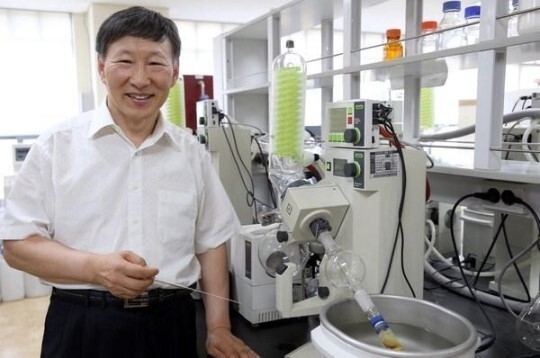[ad_1]
AsianScientist (Jun. 8, 2021) – Despite covering over 70 percent of our planet, a vast majority of the ocean remains unexplored. But even with so little access, the ocean continues to provide nourishment and resources for mankind.
For example, carrageenan and algins produced from seaweed are used in everything from toothpaste to fertilizers. To celebrate World Oceans Day, we highlight the myriad benefits of the sea—and the innovators who transform marine materials into life-saving products.
Professor Kim Se-Kwon of Hanyang University is dedicated to harnessing materials from the sea to benefit health. To strengthen bones and teeth, for instance, he previously developed an easily absorbed water-soluble calcium derived from fish intestines and bones.
In his four decades of working in marine biotechnology as a senior professor at Pukyong National University and the director of the Marine Bioprocess Research Center (MBPRC), Kim has authored over 550 research papers, holds 140 patents and has written and edited over 50 books—spanning everything from refining raw marine organisms into valuable biomaterials to developing diverse products like hair growth tonic and liver health supplements.
Speaking to Asian Scientist Magazine, Kim shares the driving force behind his work, and his hopes for the future of marine biotechnology.
The Southern part of the Korean peninsula is majorly covered by an ocean that contains abundant marine resources. These marine resources consist of crustaceans, algae and fish which are underutilized. I was fascinated by marine organisms as their unique compounds are not available and producible in terrestrial organisms.
I wanted to find out how marine resources could be used to benefit mankind, so I started a marine biochemistry lab to investigate and develop commercial products made from marine macroalgae, microalgae and fish. In the last four decades, we have been working to develop valuable products, new biomaterials and explore the utilization of marine origin products.
Marine animals live in an extreme environment with high salinity, low levels of oxygen and high pressure. They have unique metabolic and physiological processes and it is believed that they produce potentially bioactive metabolites.
Even though around 70 percent of Earth surface is covered by water and about 80 percent of all organisms dwell in the sea, very limited research works have been carried out in the ocean for commercial product development. I have worked on developing anti-cancer, anti-inflammatory, anti-diabetics, anti-HIV, anti-oxidant, erectile dysfunction and hair growth products from marine biomaterials.

We have been working on various marine bioresources for bioactive components to treat diseases. Several valuable bioactive components are present in marine resources in the form of proteins, polysaccharides and lipids, but remain underutilized. To transform these components into bioresources, we make use of bioprocesses and bioconversion techniques.
One example of a common bioresource are chitooligosaccharides (COS) taken from crustacean’s shells, which are usually not consumed by humans. Typically, COS is produced using chemical or enzymatic methods. The chemical method can cause some health problems due to trace amounts of harmful side products. Meanwhile, the enzymatic method can be expensive, difficult to mass produce and inconsistent.
To address these concerns, I developed the first continuous COS production system with enzymes that can successfully produce COS of different molecular weights using a membrane bioreactor system.
The system can be used to produce relatively small molecular weight COS with different biological activities such as anticancer, antioxidant, antihypertension, anti-dementia activities and more. I have transferred the technology to a company for mass production on an industrial scale for commercial applications.
We also developed different kinds of cosmeceuticals from marine algae such as UV-ray blocking agents, wrinkle improvement, whitening products and hair growth tonic.

Due to changing lifestyles and food habits as well as pollution, many people are in bad health. My approach for disease treatment is “prevention is better than cure”. Many active biological substances from marine organisms have health benefits with no side effects which can protect from harmful diseases.
Recently, I have been exploring how marine polysaccharides from seaweed and crustaceans can be applied in the development of cosmetics, wound dressing, drug delivery and even tissue engineering. I am also currently editing a book detailing the potential of COS in disease prevention and control.
I always ask my students to display a favorite proverb or maxim that motivates them when they face difficulties. Their plans could be ruined or upset, but they can draw fresh courage from their chosen maxim and renew their resolution.
When you want to get success, you need to work with passion and pain. No pain, no gain. When you are trying to achieve your goals in study, work or research, you need to enjoy your work with a concentrated mind. The world is full of competition and technological improvement—we have to make efforts to foster innovation by researching with a passion.
This article is from a monthly series called Asia’s Scientific Trailblazers. Click here to read other articles in the series.
———
Copyright: Asian Scientist Magazine; Photo: Kim Se-Kwon.
Disclaimer: This article does not necessarily reflect the views of AsianScientist or its staff.
[ad_2]
Source link